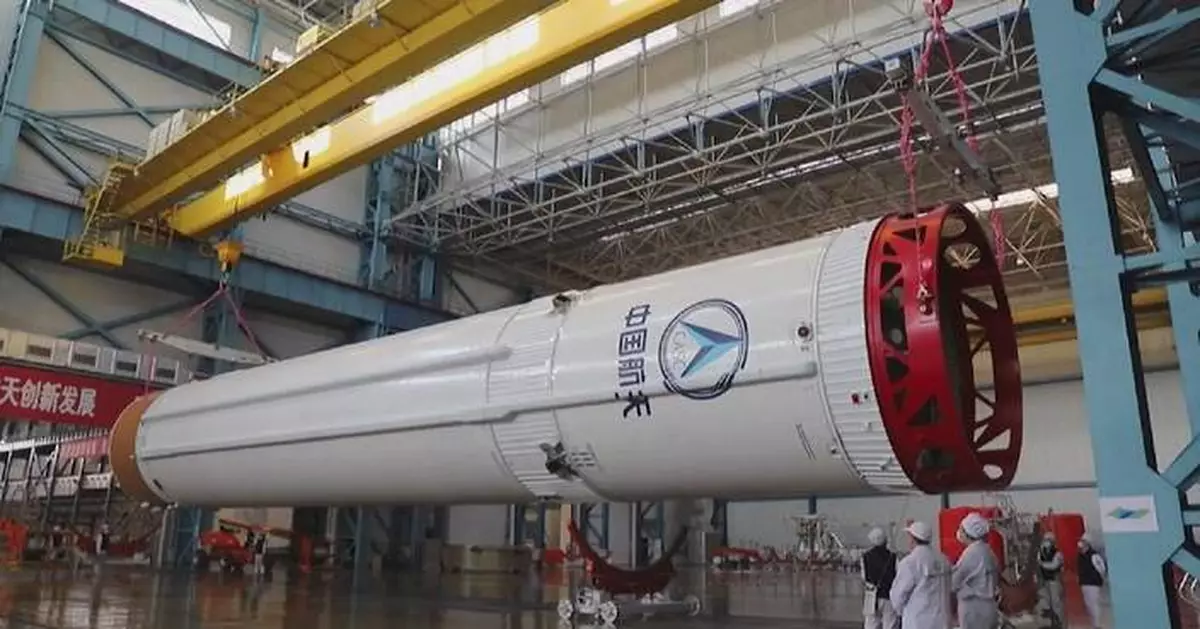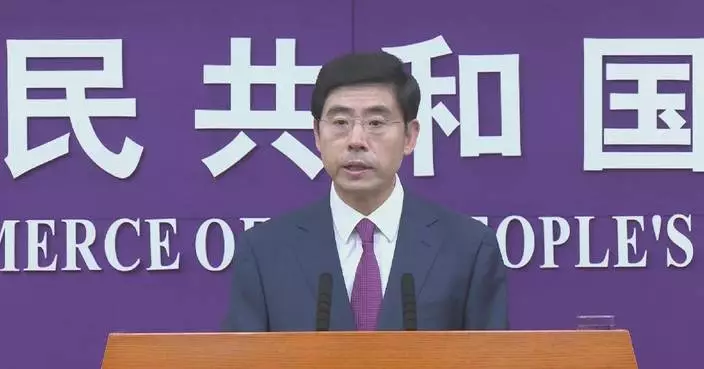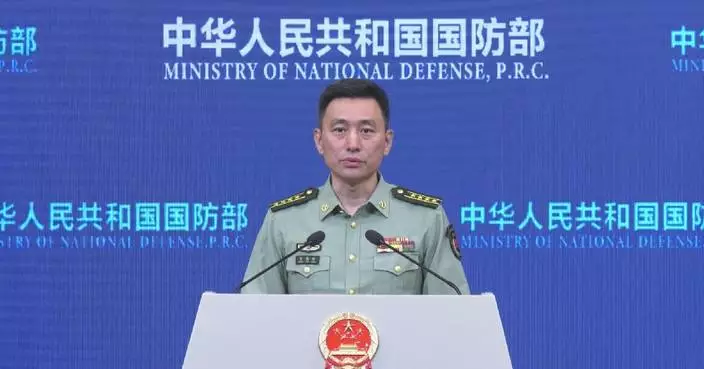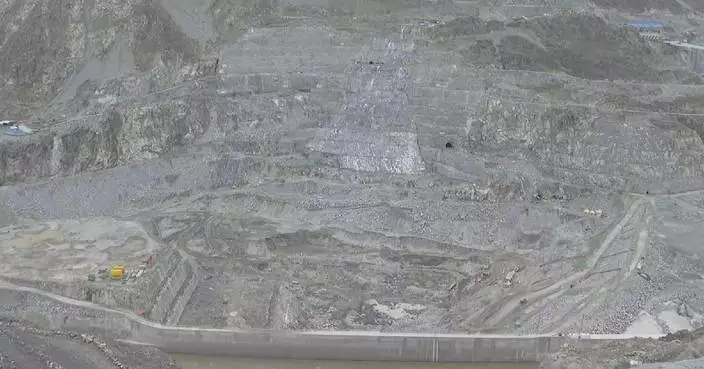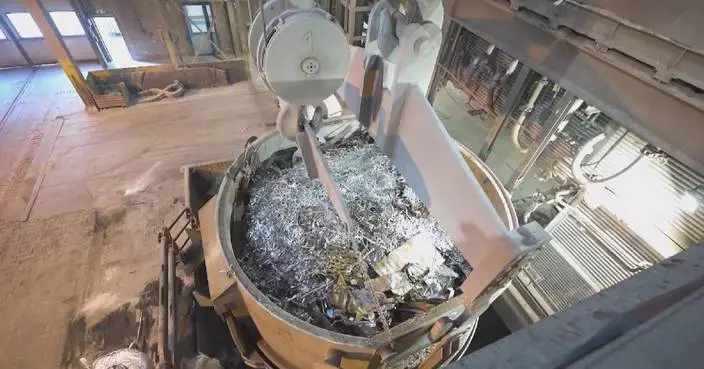Chinese scientists have made multiple technological improvements for the Long March-5B carrier rocket, thus ensuring the successful launch of the first group of low Earth orbit satellites for a satellite internet constellation.
At the Wenchang Space Launch Site in southern Hainan Province on Monday, the group of satellites was launched by a Long March-5B carrier rocket with a Yuanzheng-2 (Expedition-2) upper stage atop the rocket. The satellites have entered the preset orbits.
As the first multi-satellite launch for the Long March-5B carrier rocket, the mission places high demands on separation technology for satellites.
"To address this problem, we have developed a new type of capture buffer device, which functions as a shock-absorbing buffer during the separation process. It can significantly reduce the impact load environment and ensure the successful completion of this mission," said Zhu Haiyang with the China Aerospace Science and Technology Corporation (CASC).
For this mission, the rocket underwent 20 technological improvements, further enhancing its adaptability and reliability.
The multi-satellite launch mission requires the rocket to deliver each satellite to its own designated point, which is fulfilled with the help of the Yuanzheng-2 upper stage.
Just like a ferry to transport passengers, the upper stage, assembled with their passengers -- satellites, is sent to a designated position by the rocket at first, and then deliver satellites to their desired destinations after a long-duration flight.
"The upper stage can carry multiple passengers, which allows it to save fuel for the satellites during the orbital insertion process and shorten the orbital insertion period. This enables the satellites to enter orbit more efficiently and quickly for operation," said Zhang Xinyu with the CASC.
The Yuanzheng-2 is China's largest liquid-fuel upper stage with the strongest capability for orbit transfer.
As early as 2016, the integration of Yuanzheng-2 with Long March-5 carrier rocket sent Shijian-17, a satellite for verifying new technology in geostationary orbit, into its designated orbit, marking the successful completion of the Long March-5 rocket's maiden flight mission.
In addition, the Long March-5B rocket is equipped with a fault diagnosis and handling system for the first time, making the rocket smarter and more reliable.
"Once its condition is diagnosed, its remaining capabilities can be further evaluated to determine which orbits it can still reach and reprogram the flight profile, thus greatly enhancing flight reliability of the Long March-5 series rockets, and also supporting the intelligent upgrades for the next generation of carrier rockets," Zhu said.

Multiple technological improvements permit successful launch of satellite group
A Russian State Duma deputy praised the robust ties between China and Russia, voicing firm confidence in the promising future of their bilateral cooperation.
Chinese President Xi Jinping arrived in Moscow on Wednesday for a state visit to Russia and to attend celebrations marking the 80th anniversary of the Victory in the Soviet Union's Great Patriotic War, at the invitation of Russian President Vladimir Putin. The visit underscores the deepening comprehensive strategic partnership of coordination for a new era between the two nations and their shared focus on historical remembrance and global cooperation.
Russian State Duma Deputy Yaroslav Yevgenyevich Nilov emphasized the strength and future potential of Russia-China relations, highlighting mutual respect, economic cooperation, and shared global responsibilities during an interview with China Global Television Network (CGTN).
Nilov praised the historical and modern-day foundation of Russia-China cooperation, attributing mutual respect and shared development goals as key pillars of the partnership.
"Russian-Chinese relations, in modern times and historically, have developed on the basis of mutual respect and recognition. Examining the history of Russia and China reveals many things in common. You only need to observe the significant growth and strengthening of both economies, particularly due to close cooperation and bilateral relations. Regular exchanges of delegations, international visits and events, the creation of favorable conditions, the opening of new markets for goods, and the expansion of joint production. All these factors contribute to the deepening of bilateral relations and cooperation. This has a positive impact on key areas such as the labor market, social development, and economic growth, benefiting both Russia and China," Nilov stated.
When asked about President Xi's call to leverage the resilience and certainty of the bilateral relationship, Nilov said that maintaining strong ties requires thoughtful diplomacy and a shared vision for global balance.
"It relates to the prudent stewardship of our bilateral partnership, our shared commitment to advancing progress, fostering development, and reinforcing cooperation with the aim of preserving global multipolarity. Fundamentally grounded in the mutual recognition and respect for each other's sovereign positions, even in instances where perspectives may diverge. We consistently endeavor to maintain a respectful dialog, reasoned discourse, and sustained engagement, both at the political and humanitarian levels. It is precisely through these channels that constructive collaboration between our nations continues to flourish: cultural exchanges are deepening, scientific advancement is being fostered, and resilient trade linkages are being created. Thus, it is evident that all necessary prerequisites exist for the further development and consolidation of relationships within the established paradigm, a framework wherein the previously mentioned objectives are not only achievable but actively pursued. Moreover, I am confident that the ongoing high-level engagements taking place in the Russian Federation, as well as those set to continue following the conclusion of the celebratory events, will serve to further solidify the reinforcement of our bilateral ties and, crucially, the enduring friendship between our nations," said Nilov.

Russian State Duma deputy hails strong Russia-China partnership



